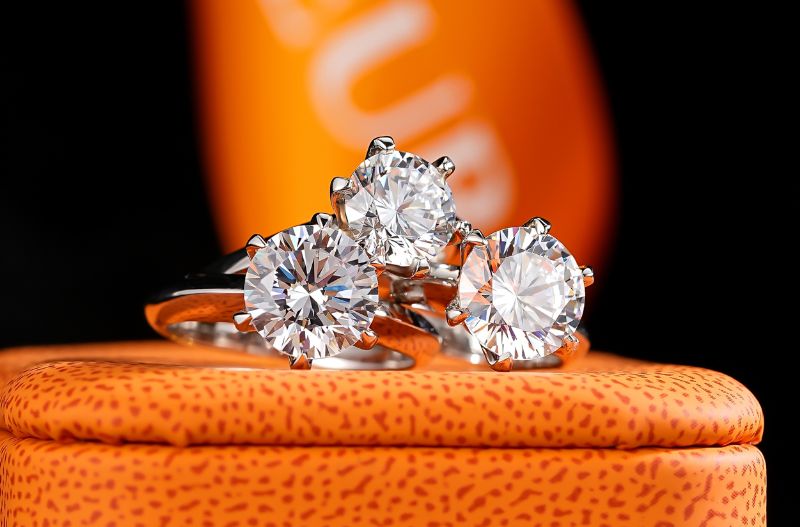In recent years, lab grown diamond engagement rings have gained immense popularity among couples seeking an ethical and sustainable alternative to mined diamonds. Lab grown diamonds are created using advanced technological processes that replicate the natural formation of diamonds, producing gemstones that are visually and chemically identical to their mined counterparts. The growing demand for lab grown diamond engagement ring highlights a shift towards responsible consumerism and environmental consciousness.
How Lab Grown Diamonds Are Made
Lab grown diamonds are produced using two primary methods: High-Pressure High-Temperature (HPHT) and Chemical Vapor Deposition (CVD). These processes allow scientists to create lab grown diamonds with the same crystal structure, hardness, and brilliance as natural diamonds. HPHT mimics the natural conditions deep within the Earth, while CVD involves depositing carbon atoms layer by layer to form a diamond. The advanced techniques behind lab grown diamonds ensure that they meet the highest quality standards, making them an excellent choice for engagement rings.
Advantages of Lab Grown Diamond Engagement Rings
Choosing a lab grown diamond engagement ring comes with numerous benefits. Firstly, lab grown diamonds are more affordable than natural diamonds, often costing 30-40% less while maintaining the same visual appeal. Additionally, lab grown diamonds are free from the ethical concerns associated with diamond mining, such as human rights violations and environmental destruction. Couples who opt for a lab grown diamond engagement ring can enjoy peace of mind knowing their choice supports sustainability and ethical sourcing.
Lab Grown Diamonds vs. Natural Diamonds
Many people wonder whether lab grown diamonds are as good as natural diamonds. The truth is that lab grown diamonds possess the same physical, chemical, and optical properties as mined diamonds. Lab grown diamonds undergo rigorous grading by gemological institutes to determine their cut, color, clarity, and carat weight, just like natural diamonds. The only difference lies in their origin—lab grown diamonds are created in controlled environments, eliminating the need for destructive mining practices. When choosing a lab grown diamond engagement ring, couples can be confident they are getting a high-quality gemstone with the same brilliance and durability as a mined diamond.
The Sustainability of Lab Grown Diamond Engagement Rings
One of the most significant advantages of lab grown diamonds is their environmental impact. Traditional diamond mining requires extensive land excavation, water usage, and energy consumption, leading to deforestation and habitat destruction. In contrast, lab grown diamonds have a much smaller carbon footprint and require fewer resources to produce. A lab grown diamond engagement ring aligns with the values of eco-conscious couples who want to minimize their impact on the planet while still enjoying a luxurious and beautiful symbol of their love.
Customization and Variety of Lab Grown Diamond Engagement Rings
Lab grown diamond engagement rings offer a wide range of customization options, allowing couples to create a unique and personalized piece of jewelry. With lab grown diamonds available in various shapes, sizes, and colors, buyers have more flexibility in designing their dream engagement ring. Whether one prefers a classic round-cut lab grown diamond or a fancy-colored gemstone, there are endless possibilities to explore. The affordability of lab grown diamonds also enables couples to choose larger or more intricate designs without exceeding their budget.
Misconceptions About Lab Grown Diamonds
Despite the numerous benefits, some misconceptions about lab grown diamonds persist. One common myth is that lab grown diamonds are inferior to natural diamonds. However, lab grown diamonds possess the same hardness, brilliance, and fire as their natural counterparts, making them just as valuable and beautiful. Another misconception is that lab grown diamonds do not hold their value over time. While resale values for both lab grown and natural diamonds fluctuate, the increasing demand for lab grown diamond engagement rings suggests a growing acceptance and appreciation for these sustainable gemstones.
The Future of Lab Grown Diamond Engagement Rings
As more consumers prioritize ethical sourcing and sustainability, the popularity of lab grown diamond engagement rings is expected to rise. Advances in technology continue to enhance the quality and affordability of lab grown diamonds, making them an attractive choice for modern couples. Jewelers and designers are also embracing lab grown diamonds, offering exquisite collections that rival traditional mined diamond engagement rings. The future of lab grown diamonds is bright, and they are set to become a staple in the fine jewelry industry.
Where to Buy Lab Grown Diamond Engagement Rings
With the growing demand for lab grown diamonds, many reputable jewelers now offer stunning lab grown diamond engagement rings. Consumers can purchase lab grown diamonds from online retailers, boutique jewelry stores, and major jewelry brands. It is essential to buy from trusted sources that provide certification from reputable gemological laboratories to ensure the quality and authenticity of the lab grown diamond engagement ring. Shopping for lab grown diamonds online also allows customers to compare prices and designs, making it easier to find the perfect ring.
Conclusion: Why Choose a Lab Grown Diamond Engagement Ring?
Lab grown diamond engagement rings offer a perfect blend of beauty, ethics, and affordability. As an eco-friendly and conflict-free alternative to mined diamonds, lab grown diamonds provide couples with a responsible and meaningful way to symbolize their love. With their identical properties to natural diamonds, lab grown diamonds are a stunning and durable choice for engagement rings. Whether driven by ethical concerns, environmental responsibility, or cost-effectiveness, choosing a lab grown diamond engagement ring is a decision that reflects both personal values and modern elegance.

